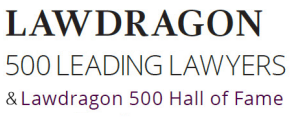Morcellator Hysterectomy Surgical Tool and Greater Cancer Risk
Lieff Cabraser has been recognized by U.S. News, Best Lawyers, and the National Law Journal as one of the top plaintiffs’ law firms in the nation.
We represent women who underwent a hysterectomy or other type of uterine surgery in which a power morcellator was used and cancerous tissue was spread. Please contact us by completing the contact form on this page or call us toll-free in our New York office at 1-888-321-1510 and ask to speak to Lieff Cabraser attorney Kelly McNabb.
What are Power Morcellators?
Morcellators are tools used in surgery. The specific version of morcellators causing concern are called laparoscopic power morcellators. The devices have a spinning blade at the end and have been used for decades to remove the uterus (a hysterectomy) or remove uterine fibroids (a myomectomy) by cutting the tissue into tiny pieces and extracting them through small incisions.
This type of surgery is usually less invasive and requires less post-operative recovery time than an abdominal or vaginal hysterectomy or myomectomy.
Are Power Morcellators Used Frequently?
Yes. Prior to 2015, it was estimated that 55,000 to 75,000 U.S. hysterectomies a year were performed using power morcellators. Doctors also use them in myomectomies, the removal of fibroids alone. As noted in reports summarized by the FDA, up to 80 percent of women will have uterine fibroids during their lifetime.
As noted by the American Association for Justice, while some members of the medical community still that a morcellator can be a useful and efficient surgical device in some patients, the FDA and most of the medical community have concluded that the device’s potential benefits are greatly outweighed by a fatal danger when used in women with an unsuspected malignant uterine sarcoma — typically a leiomyosarcoma — hidden within the fibroid.
How Do I Know If A Power Morcellator Was Used During My Hysterectomy?
If you or a loved one had noninvasive surgery to remove your uterus or uterine fibroids, a power morcellator may have been used. To know precisely, you should contact your surgeon’s office and ask if a power morcellator was used. The medical records for your surgery — such as the operative report, pathology report, notes by the physician or nurse, or even the billing reports for your surgery — most likely identify the instrument that removed the uterus or fibroids. You can contact your doctor’s office and request a copy of these records.
What is the Danger of Using Power Morcellators to Perform a Hysterectomy or Remove Fibroids?
While morcellators permit the rapid removal of uterine growths or the entire uterus, not all tissue is removed during the surgery. If any cancer cells are present in the uterus, the spinning blade of the morcellator may rapidly spread the cancer cells to the abdominal and pelvic cavities and other organs, dramatically worsening the patient’s outcome. There is no reliable method to predict whether a woman with fibroids may have cancerous tissue, specifically uterine sarcomas.
Has the Use of Morcellators Been Banned in Hysterectomies or Other Procedures to Remove Uterine Fibroids?
No, however the FDA stated in November 2014 that surgeons should avoid the use of laparoscopic power morcellators for removing uterine tissue in the vast majority of cases. Further, surgeons wishing to use the devices must discuss with patients the risk the devices may spread unsuspected cancer during fibroid surgery.
In May 2015, the Wall Street Journal reported that the Federal Bureau of Investigation (FBI) had started an investigation Johnson & Johnson as to whether it was aware of and failed to disclose to government safety regulators and the physicians the risk of cancer being spread by morcellators.
What is the Risk of Cancer Spreading Through the Use of a Laparoscopic Power Morcellator?
Based on current data, the FDA estimates that 1 in 350 women undergoing hysterectomy or myomectomy for the treatment of fibroids have an unsuspected uterine sarcoma, a type of uterine cancer that includes leiomyosarcoma.
What Are My Legal Rights If I Have Been Diagnosed With Cancer After Having Undergone a Hysterectomy or Surgical Procedure to Remove Fibroids?
The law in most states provides individuals with legal claims and the right to compensation for injuries they suffer as a result of a defective medical device or medical procedure in which the risks were not fully disclosed.
Patients may file a personal injury lawsuit seeking compensation for their pain and suffering, medical expenses including the cost of replacement surgery, lost past and future wages, and punitive damages.
What are the Symptoms of Leiomyosarcoma and Other Types of Uterine Sarcoma?
As explained by the Memorial Sloan Kettering Cancer Center, most women with uterine sarcoma first notice abnormal vaginal bleeding, spotting, or unusual vaginal discharge between menstrual periods or after menopause. Other symptoms can include pain and an unusual feeling of fullness in the pelvic area and frequent urination.
Contact us
If you or a family member have suffered an injury you believe is linked to a surgery performed using a laparoscopic power morcellator, experienced female injury attorneys at Lieff Cabraser are available to answer your questions. We will review your claim for free and without any obligation on your part. Please complete the contact form below.
Or you may call us toll-free in our New York office at 1 888 321-1510 and ask to speak to Lieff Cabraser attorney Kelly McNabb.
PERSONAL INJURY CLIENT TESTIMONIALS
“Outstanding work. You went to work and got us maximum offer plus additional compensation. I would highly recommend anyone to Lieff Cabraser Heimann & Bernstein law firm. Extremely organized, professional, detail oriented and extremely knowledgeable in personal injury cases.”
-Maurice in New York
“You were responsive to my questions and concerns at all times. The quality of representation was excellent.”
-Jill in Indiana
“I couldn’t be more pleased with how the case resolved. What stands out is your professionalism, personal attention, and concern. This has been a long road, and I am so grateful.”
-Cheryl in Utah
Read more client testimonials












